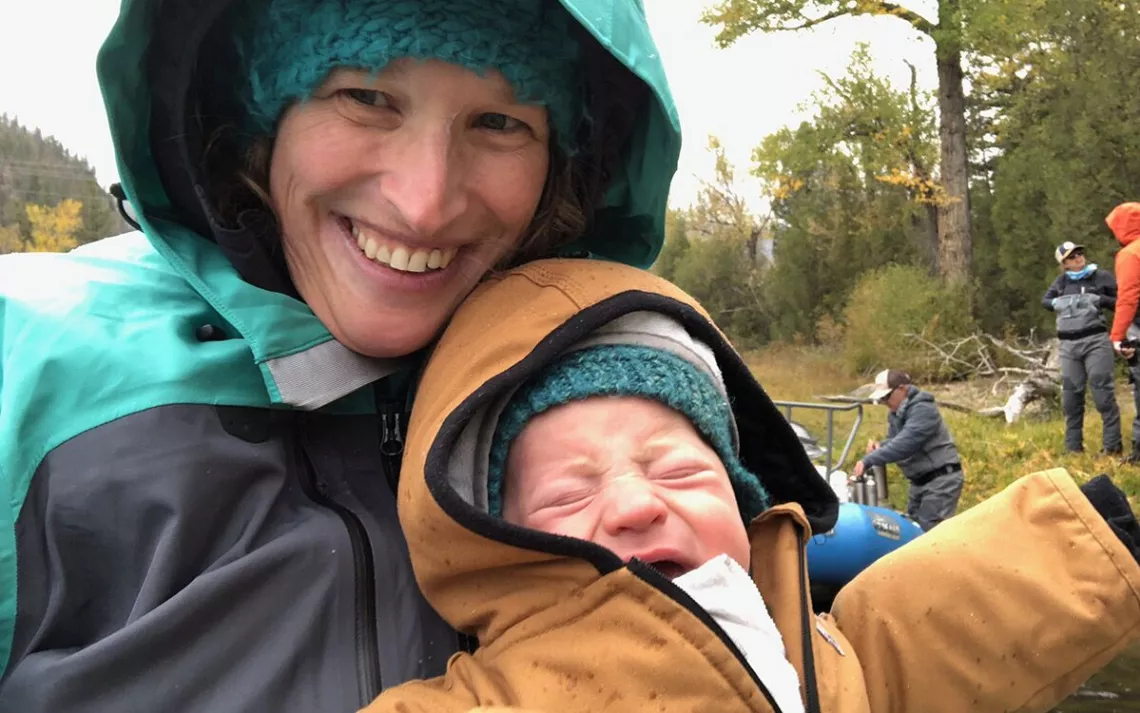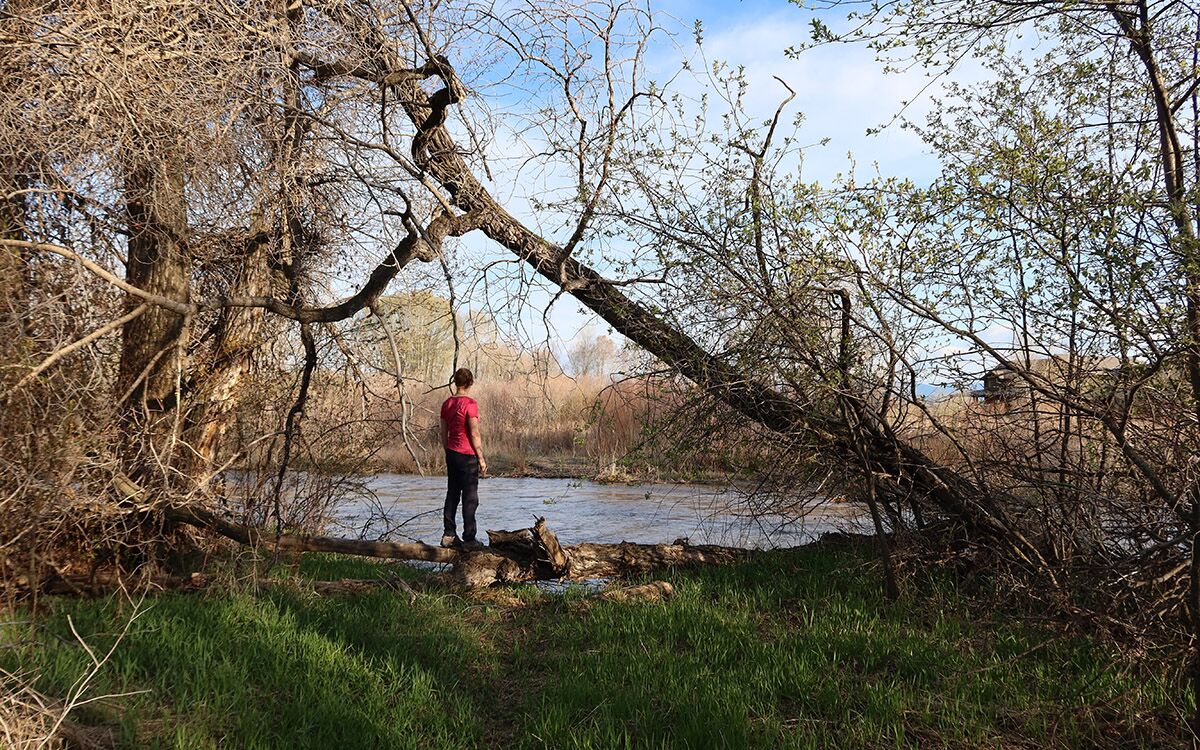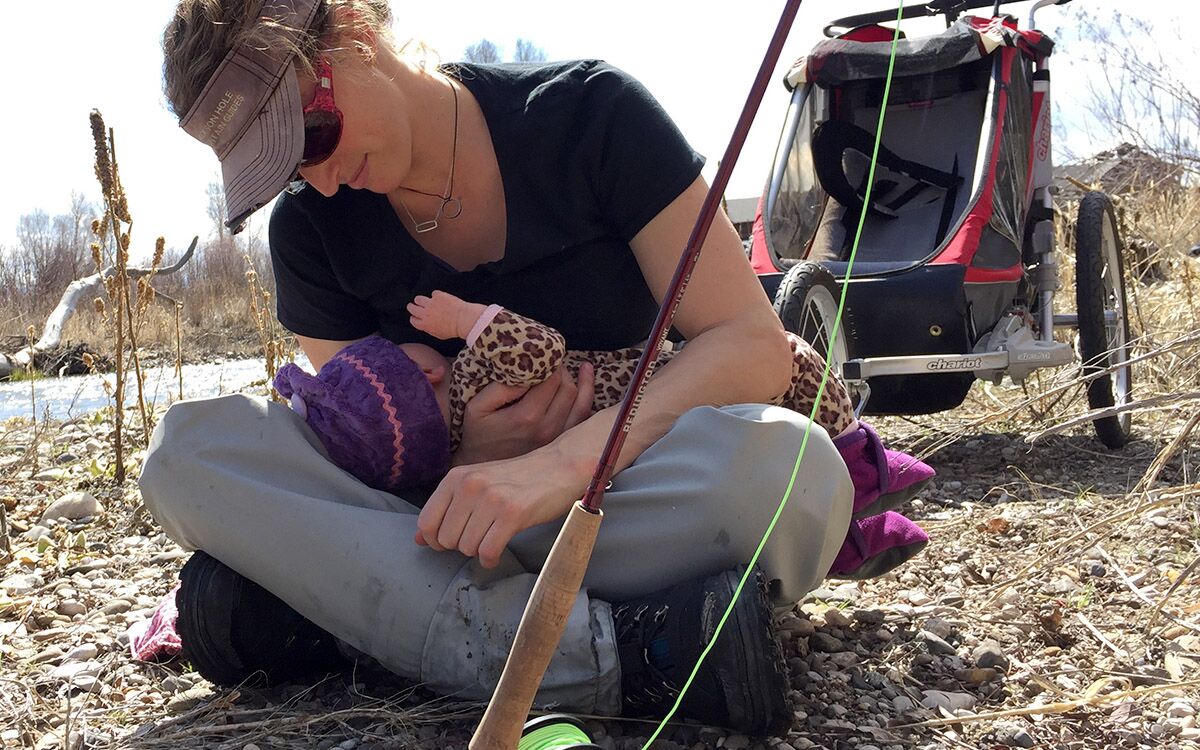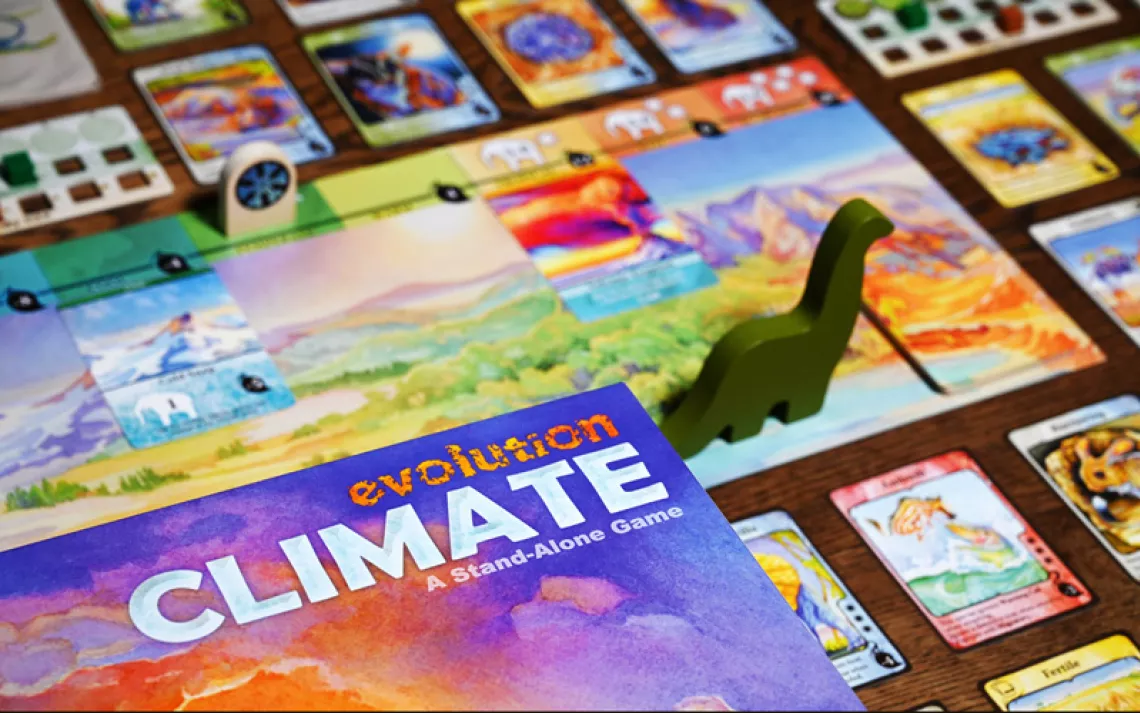My Postpartum Brain on Nature
A mother navigates colic, postpartum depression, fly-fishing, and solace

Photos courtesy of Emily Stifler Wolfe
I walked away from our house carrying a fly-fishing rod, a water bottle, and a manual breast pump. The pavement radiated the day’s dry heat, even though the sun was already behind the mountains in the west. The screams of my six-week-old son, Gus, flew like knives from our kitchen window, where my husband Pat held him while cooking macaroni for our three-year-old daughter. I felt Gus’s pain in every cell of my being. Since he was born, I, too, had been crying.
This was the first time I’d left Gus for longer than a shower. With each step away, my breath shook a little less. I headed toward the green tangle of cottonwoods that followed the East Gallatin River near our home outside of Bozeman, Montana. By the time my feet left the pavement and hit the dirt, something resembling calm crept in.
I still vividly recalled the raw postpartum period after our daughter’s birth—the hormones and sleep deprivation piled atop nursing challenges. But I was wholly unprepared for this. With silent reflux searing his esophagus and obvious distress in his gut, Gus would arch his back and neck, red-faced, and inconsolable. Day and night, we’d bounce him, walk him, or hold a pacifier in his mouth. In the car, my daughter and I wore lawn-mowing ear protection, but the screaming was still so distracting I was afraid I’d swerve off the road. Some days, I wanted to. Colic, we were told, gets better with time. Often in three or four months, but sometimes it lasts up to a year.
Near the river, tall grass scratched against my legs, and the sounds of birdsong, insects, and moving water rose like an orchestra tuning. I walked through a tunnel of willows and honeysuckle to a beach cobbled with smooth rocks. The river air felt alive, a respite from the day’s heat.
I’m a beginner angler, equipped with the basics of casting from years of childhood hook-and-worm fishing, plus a windy April week learning to fly cast on my Alaska honeymoon, which I mostly spent untangling line on the riverbank. Before I left for the river that evening, Pat chose a few flies from his fishing vest and reminded me how to tie them on to the rod he’d bought me last Mother’s Day, back when I was still pregnant.
“They love these hoppers,” he said, wearing a temporarily sleeping Gus in the front carrier as he tied a faux grasshopper onto my line. “But if that doesn’t work, try one of these nymphs.” He pointed to a row of tiny flies that mimicked midge larva. The hopper was obvious, but the rest looked like mysterious mini voodoo dolls to me.
At the beach, I set up the fishing rod and began casting toward a small pool, encouraged by my sudden freedom but doubtful I’d catch anything. But you can’t catch a fish if you don’t try, and you won’t find solace without looking for it. This was my chance. And it was here at the river—or anywhere in nature, really—that I was most likely to find the strength I needed during the postpartum torrent.
One in seven women in the US experiences postpartum depression, according to the National Perinatal Association. The current suggested treatments are therapy and antidepressants, and indeed, I’d started seeing a therapist back in my first trimester, when I struggled through nausea, hormones, and the surprise of a not-quite-planned pregnancy. The counseling helped, but I needed more. After a lifetime of climbing and skiing, I missed the rigor of moving through the mountains and the moments of calm I found there. As it turns out, I wasn’t alone. More than 400 studies demonstrate nature’s comprehensive health benefits. And in comparison to the $34,000 price tag on Zulresso, a new PPD-specific drug approved by the FDA in March 2019 (the first approved specifically for that purpose), a few doses of nature are a relatively affordable first-line option for many women.
With social distancing and shelter-in-place still enacted in many parts of the country, this Mother’s Day may be especially lonely for new mothers coping with postpartum issues without the support of friends and extended family. Nature, at least in some form, is still there for most of us.
Kimberly Ann Johnson, a doula and the author of The Fourth Trimester, a guide for postpartum women, lists contact with nature as a universal postpartum need, after extended rest, nourishing food, loving touch, and the presence of wise women and spiritual companionship.
“The postpartum time is such a slow time, and for many women, that’s one of the hardest parts,” Johnson says. “With nature, you can’t rush things. . . . The flowers are going to bloom when they bloom. When we stay in contact with that, we can have a little more peace [with] the pacing.” She stresses that you don’t have to hike or camp to feel nature’s power, instead suggesting micro shifts like trading screen time for sitting with a view out the window toward the sky—something I gleaned great value from, myself, while nursing my son in his bedroom.
Dr. Nooshin Razani, a pediatrician and founder of the Center for Nature and Health at UCSF Benioff Children’s Hospital Oakland, says spending time in nature offers stress relief, as well as opportunities for physical activity and social connection, all of which relieve symptoms of postpartum depression. The coronavirus outbreak has made clear the mental health benefits of getting outside for all humans, and 43 percent of Americans planned to spend more time outside due to social distancing rules, according to a study by market intelligence research outfit CivicScience.
Health-care providers nationwide have been prescribing park visits to the general public for around a decade, with rapid growth in recent years. ParksRx, an informational hub for parks prescriptions and a project of the Golden Gate National Parks Conservancy, this month completed a nationwide survey that found a 300 percent increase of park prescription programs over the past five years, and at least 87 programs in 32 states, according to Diane Mailey, director of the project.
Because this is such a new field, systematic research hasn’t been conducted to prove nature’s beneficial effects on postpartum women, specifically. “Until then, we don’t need it,” Dr. Razani says. “We see that it’s common sense, and we can advocate for women to be outside.”
 Once I began casting into the river, a rhythm took over. I waded in shin-deep, and water filled my shoes. Then, so fast I almost missed it, a trout struck my fly. Its white belly flashed as it turned and darted away. It was the first time in months I’d felt the rush I’ve spent my life chasing in the mountains. I was hooked.
Once I began casting into the river, a rhythm took over. I waded in shin-deep, and water filled my shoes. Then, so fast I almost missed it, a trout struck my fly. Its white belly flashed as it turned and darted away. It was the first time in months I’d felt the rush I’ve spent my life chasing in the mountains. I was hooked.
Wading upstream, the tiny stabilizer muscles in my core and pelvis twinged as I walked cautiously over slippery river stones. The musty smell of rotting moss and algae bubbled up with each step. I cast into the next pool, and droplets of cool water flicked from my line onto my head, giving me goosebumps when the beads ran down my scalp. The details were so sharp and beautiful, the sensations so intense, it made me think of Gus. Of the moments between his screams and sleeplessness. He had smiled for the first time this week, a full-body expression of uninhibited joy. Fifteen minutes later, he was fussing toward another massive meltdown, but that smile was enough to keep me going.
I stopped to watch the half-moon rise over the mountains. Ripples reflected the blue and pink of the evening sky, and an osprey winged overhead. I’d only been gone an hour, but I missed my family.
I knew then we’d make it. Gus would cry and I would cry, but as long as I kept coming back to the river, and to the trails and mountains I’d frequented before he was born, I wouldn’t risk losing sight of myself—or hope for what was to come.

Gus is now 10 months old and happy as can be. His colic and reflux lasted until 3.5 months and then switched off like a light.
 The Magazine of The Sierra Club
The Magazine of The Sierra Club



